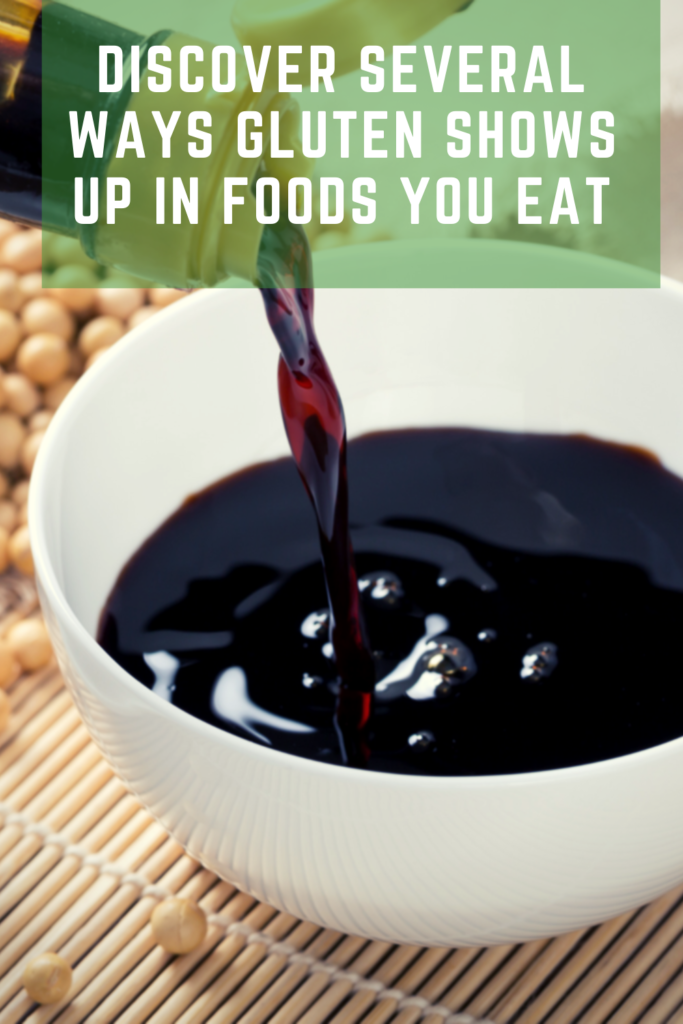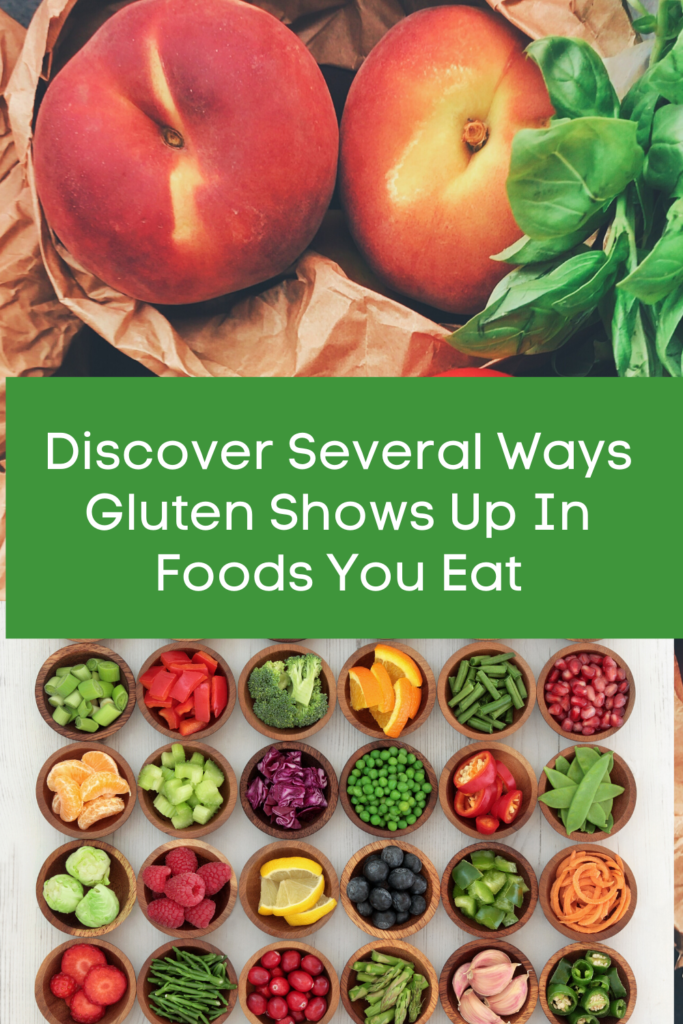There are many ways gluten can sneak into many of the foods we eat.

One of the first steps to being gluten-free is knowing exactly what foods contain gluten and what foods don’t. Unlike conventional diets that simple require you to adjust your calorie or nutrient intake, the gluten-free diet requires you to do one very important thing – eliminate ALL foods that contain gluten.
So what this basically means is that you aren’t going be able to consume most processed foods. Many processed food contain gluten so by avoiding processed foods, you can better prevent your body from getting inflamed and triggered by the gluten. This is basically good news since eating processed food isn’t the healthiest option anyways.
That being said, despite your best efforts, you may end up inadvertently consuming some gluten in the foods you eat. Especially if you eat out, or eat foods prepared by others. Eating something containing gluten could be due to carelessness (you choose to eat something knowing you shouldn’t) or because you are not even aware that gluten is present in the food you are eating.
I for one often eat things knowing I shouldn’t because I miss being able to eat anything I want. I know I’ll pay a price and I make a split second decision to suffer the consequences. (and I do)

The following are just a few of the most common reasons you may consume gluten and not even know it:
- Cross-contamination of foods
Cross-contamination happens when small particles of food containing gluten end up in your meal without you realizing it. This can happen a lot in restaurant kitchens that offer gluten-free options but don’t have a separate work area. For example, if you use the same bread board to slice your gluten-free bread as your family members who use it to slice their wheat bread, the crumbs will end up on your slice and you end up eating small bits of gluten.
This may seem insignificant that something so miniscule and insignificant as a crumb, but the contamination of crumbs are enough to cause a reaction and still inflame your small intestine and cause issues. - Not understanding food labels
This is another very common area where people (myself included) slip up and end up eating something they shouldn’t. Gluten is found in a variety of ingredients: flours, seasonings, additives, etc. If you are looking at labels and only avoiding one type of flour but fail to realize that other types of flours and ingredients contain gluten, you may be eating a lot more gluten than you should and end up suffering for it.
Having a thorough knowledge of your gluten-free options is going to be the most helpful when making every day food choices. For example, here are some good gluten-free alternatives to regular flour: buckwheat, amaranth, brown and white rice, millet, quinoa, sorghum.
Most vegetables and meats are gluten-free so eating more fruits and vegetables is a good option… BUT remember, how the dish is prepared definitely matters. For example, if you are at a Chinese restaurant and order stir-fried beef, the beef itself is gluten-free and so is the refined oil they use. However, when they flavor the dish with a dash of soy sauce, you are going to have problems. Soy sauce contains gluten unless you specifically choose a brand that is made gluten-free.
Seasonings like soy sauce is just one of the many ways that gluten can sneak into your dishes. Packaged spices can be a problem too, as well as BBQ sauce, ketchup, even mustard.
Here is something you may not know. The same principal applies to dairy products. Milk is gluten-free but when food manufacturers try to convert it into yogurt or cheese, chances are gluten is being used in the process because it is a great thickening agent.
Needless to say, it is extremely important you study the labels of foods very carefully. If in doubt about whether it is safe or not, just don’t consume it and pick something more natural or with fewer ingredients. - Eating out
As I mentioned above, when you are eating out, or eating foods prepared by others, you don’t really know what’s in the food. You will be in better control of what goes into your meals and what doesn’t when you are making your meals at home yourself. You know what happens if you eat gluten so chances are, you will take extra precautions to prevent cross-contamination and so on.
When you eat out, you don’t always know all the ingredients being put into your food, but you can’t be sure the cooking process and requirements for truly gluten-free foods.
Since most restaurants have to cater to a wide variety of customers, it’s highly likely they don’t have special areas and chopping boards set aside just to prepare foods for a small group of gluten intolerant customers who choose to dine there. Truth is, most places have no clue about cross-contamination and the havoc it can wreak.
Sadly, there are risks you must take when eating out. Unless you are at a restaurant where you are able to give the chef specific instructions and you know for sure that the they are careful about cross contamination, you run the risk of ingesting some gluten.
True Story: I was offered a bowl of chicken and rice at a friends house and I asked about the ingredients, explaining I had a wheat sensitivity. They told me about the main ingredients: Chicken, onions, carrots, rice and when I asked about the seasoning, they failed to tell me about the Soy Sauce. I paid the price for days.
To Conclude: now that you have more knowledge about the various ways gluten can sneak into your food, you can be more careful and prepare yourself in advance. While a gluten-free diet doesn’t have to mean a massive overhaul of your current diet,(depending on what you eat) it does require a lot of extra effort and attention if you want to feel your best and stay healthy.
Remember the effort is worth it as you are keeping your body safe and helping it to heal.
I’d love to read your comments so leave one below, or, Contact me if you have questions.


